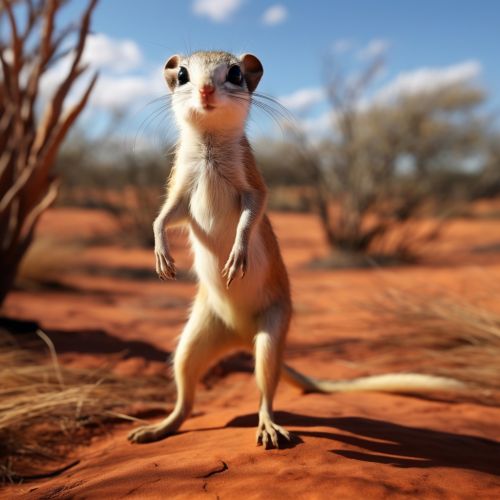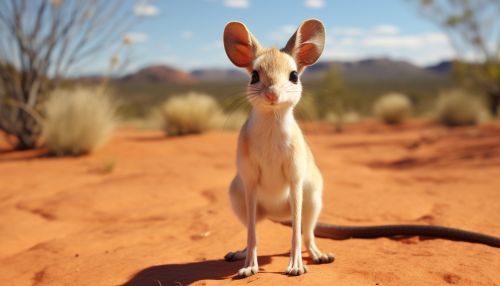Kangaroo Rat
Taxonomy and Evolution
The Kangaroo Rat belongs to the family Heteromyidae, a group of rodents found primarily in North America. The genus Dipodomys, to which the Kangaroo Rat belongs, consists of 22 species, each with unique adaptations to their specific habitats. The evolutionary history of the Kangaroo Rat is a fascinating study in adaptation and survival, with fossil records dating back to the Miocene epoch, over 5 million years ago.
Physical Characteristics
Kangaroo Rats are small rodents with a body length of 10 to 15 cm, excluding the tail. They have large hind legs, small front legs and relatively large heads. The most distinctive feature of these animals is their long, tufted tail, which can be longer than the body itself. The tail aids in balance and steering when the animal is hopping, and is also used for thermoregulation.


Behavior
Kangaroo Rats are primarily nocturnal, spending the day in burrows to avoid the heat of the desert. They are solitary animals, with males and females coming together only for mating. They communicate through a series of foot thumping patterns, which can indicate a variety of messages, from warnings of predators to courtship signals.
Diet
Kangaroo Rats are granivores, with a diet consisting primarily of seeds. They have cheek pouches, similar to hamsters, which they use to transport food to their burrows. Despite living in arid environments, Kangaroo Rats do not drink water. Instead, they metabolize water from the seeds they eat, a process known as metabolic water production.
Habitat and Distribution
Kangaroo Rats are found in arid and semi-arid areas of North America, ranging from Mexico to the western United States and Canada. They inhabit a variety of desert ecosystems, including scrublands, sand dunes, and rocky hillsides. Each species of Kangaroo Rat is adapted to a specific type of desert habitat.
Reproduction
Kangaroo Rats have a polygynous mating system, with males competing for access to females. Females give birth to litters of two to four pups after a gestation period of about a month. The young are born blind and hairless, but grow rapidly, reaching maturity in a few months.
Conservation Status
Most species of Kangaroo Rats are not currently threatened, although habitat loss due to human activity is a concern for some species. The Stephen's Kangaroo Rat is listed as endangered by the IUCN, primarily due to habitat loss caused by urban development.
